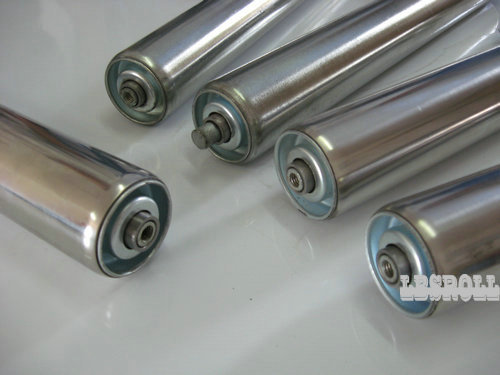A History of the Conveyor Roller
 Conveyor system applications are so priceless to modern businesses. The idea of gravity roller conveyors has been available since the inception of documented history. It's thought that the roller technique was applied in the building of the historic Egyptian pyramids and Stonehenge, amongst a number of other things.
Conveyor system applications are so priceless to modern businesses. The idea of gravity roller conveyors has been available since the inception of documented history. It's thought that the roller technique was applied in the building of the historic Egyptian pyramids and Stonehenge, amongst a number of other things.
Although roller conveyors have been around probably ever since the caveman, it wasn't before the Twentieth century this modern technology was brought into practicality. It was around this period that the notion that a group of folks could successfully move a commodity from point to point, without basically moving themselves. For a huge collection of steel roller, both new and used, you will find a wide range of roller stock here http://www.conveyorrollers.co.uk/.
Very early application of conveyor systems
There isn't any doubt that conveyor roller methods have already been a fundamental element of material handling for more than 100 years, despite the fact that their origin traces back beyond this time. Movement of bulk materials utilizing conveyor belts dates back to 1795 when the majority of the machine was utilized by farmers to load whole grains onto ships. This was a great comfort to farm owners after toiling hard in the fields. They were also utilized in underground mines once the industry started making use of them to move coal.
A couple of points in history
- It was not until the early 1800s that factories started using conveyor systems in material handling.
- The most significant milestone started in 1908 when Hymle Goddard, from Logan Company patented the very first roller conveyor in 1908. However the conveyor business didn't completely prosper until 5 years later on.
- In 1913 Henry Ford made history by adding the assembly line for the mainstream industry by utilizing the roller conveyor to alter material movement. This revolution reduced manual labour needs and accelerated production.
- In the 1920s, conveyor roller systems were invented to transport products over longer distances from the initial short distances. The very first subterranean advanced installment with layers of rubber and cotton covers was created to move coal over a distance of 8kms.
- Over the period of the World War II, synthetic belting materials were utilized because of the shortage of natural materials. This marked the rapid technical expansion in improved conveyor systems. Up to today an infinite list of synthetic materials and polymers are being used in production conveyor roller belting systems.
- In 1947, the Us Standards Association formulated the very first standards in conveyor safety.
- With its creation in 1970, OSHA prioritized actions to reduce conveyor noise. The manufacturers of conveyor systems responded by developing quite rollers, precision bearings and sturdy pieces to control damage.
From then, advancements in modern technology and development have kept conveyor roller systems on the cutting edge; with the aid of computers to control complex and automated applications, flexibility and best performance.
Modifications in technology are guaranteed to hold the industry in motion as end users look for faster throughput, diverted sorting and use of wireless technological innovation.
The utilization of conveyor roller systems in society today
 While the belt conveyor has its negatives, a lot of industries today are full of roller conveyors since it permits automatic accumulation of goods. In the present computer planet, roller conveyors still play a significant role. Roller conveyor systems are utilized in the vehicle, computer, farming, food processing, pharmaceutical, aerospace, inorganic, canning and bottling industrial sectors, to mention just a couple.
While the belt conveyor has its negatives, a lot of industries today are full of roller conveyors since it permits automatic accumulation of goods. In the present computer planet, roller conveyors still play a significant role. Roller conveyor systems are utilized in the vehicle, computer, farming, food processing, pharmaceutical, aerospace, inorganic, canning and bottling industrial sectors, to mention just a couple.
While many people might be unaware of it, contemporary systems have millions of rollers functioning relentlessly behind the curtain. From food, mail, courier, airport baggage, clothing and industrial packages, conveyor rollers are utilized in movement to intended destinations.
There are several other sorts of item movement systems, however it is only roller conveyor systems that may function as centres for deposition and routes for movement concurrently. You will discover very few inventions with the same effect on society such as the conveyor roller systems.